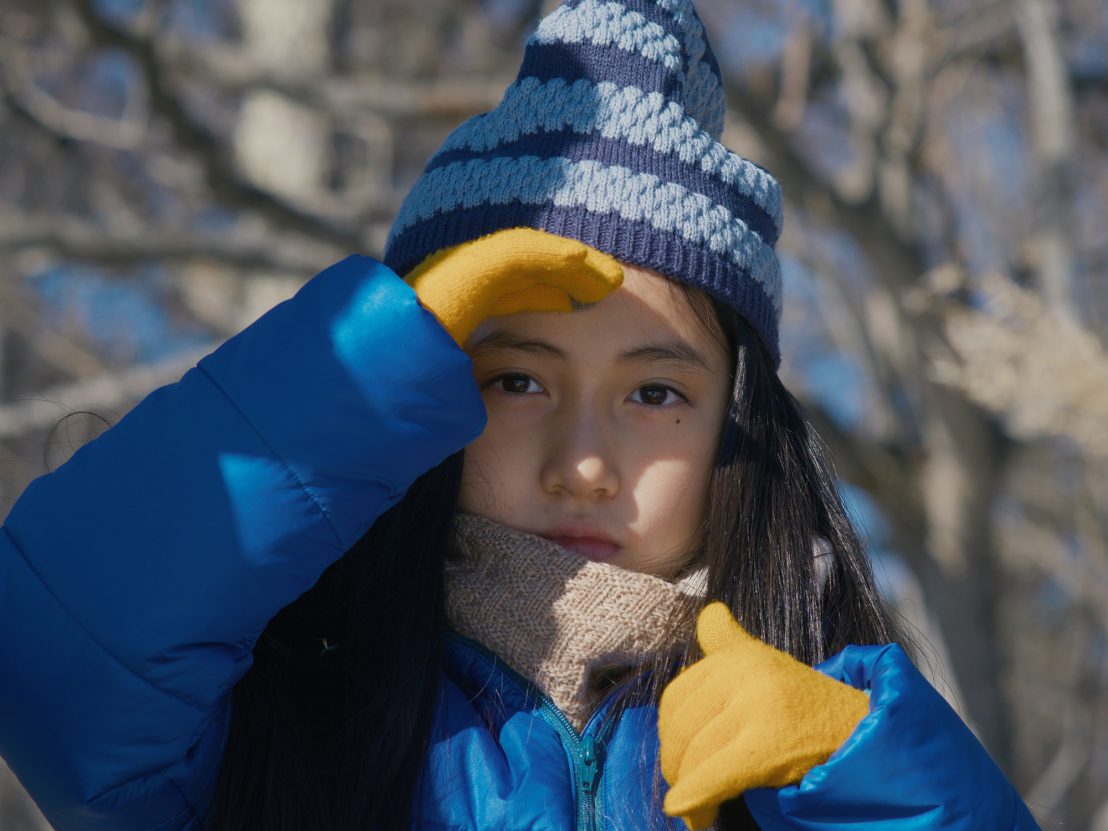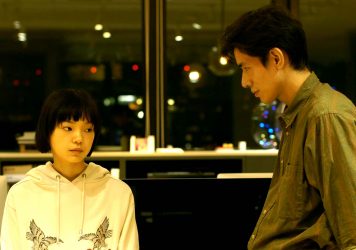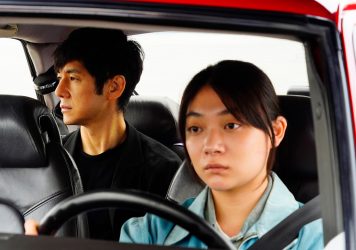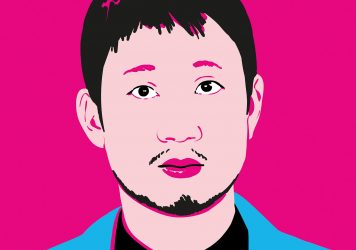
Ryusuke Hamaguchi's ecological drama about a small mountain village threatened by a new development is a haunting, glacial depiction of the gulf between capitalism and environmentalism.
Ryusuke Hamaguchi’s Evil Does Not Exist opens beneath a canopy of trees, stripped bare by winter. We glide forward with our gaze fixed upwards at their branches, grey and threadlike against the uniform light of the sky. In a returning collaboration with Hamaguchi after Drive My Car, composer Eiko Ishibashi’s tremulous string score dislodges something tender within your chest, like a stone being knocked loose at the mouth of a river.
We spend a lot of time looking. So does Hana, a young girl wearing a striped beanie and tiny, tiny yellow gloves (played by a preternaturally grounded Ryo Nishikawa). Her father Takumi (Hitoshi Omika of Wheel of Fortune and Fantasy) is an unsmiling, quiet man who shares his daughter’s observational gaze and carries out odd jobs here in Mizubiki Village, just two hours outside of Tokyo. Sometimes together, sometimes alone, this is what they see: Wild wasabi, sprouting unruly on the incline of a small hill. Clear mountain springs, rushing playfully over mossy stones. The skeleton of a fawn, felled by an unknown hunter. There will be only two gunshots heard in this film, and they are monumental.
Evil Does Not Exist has something grand, almost proselytising about its title. So it’s perhaps odd at first that Hamaguchi’s beautifully precise film – so restrained and exacting that its denouement is nothing less than earth-shattering – is about glamping. Relative to the affecting beauty of this village and the easy ways its people and environment tangle together, it’s an instinctively ugly concept. As we soon realise after the actors repeatedly form their lips around its clumsy syllables, ‘glamping’ is an ugly word, too: a mutt of urban capitalism, consuming things fundamentally incompatible with its digestive system.
When two Tokyo talent agency representatives arrive in Mizubiki to brief its residents about a glamping site they’re constructing as a company retreat, we realise why Hamaguchi spends so much time entreating us to quietly gaze at the landscape. Mizubiki’s ecology is placed in the centre of the frame: a pheasant feather held up to the sunlight, an expanse of white snow gently marred by deer tracks. These compositions never feel like backdrops, but a way for the land to communicate with us through the camera – reorienting our time, attention, and subjectivity in relation to it. The film’s characters sometimes look directly at us, like we take the place of the wild wasabi or the deer skull.
So when the Tokyo lackeys arrive with an advertisement for the glamping project accompanied by some calming royalty-free track, it’s grating. We’re seeing the same trees, the same crystalline water; but as the stony faces of the villagers tell us, we couldn’t be looking at things more differently. “So much doesn’t make sense,” a young man says when the floor is opened for questions, and it doesn’t – Hamaguchi’s film excavates exactly why it’s so hard to make someone understand that “what you do upstream will affect those living downstream”. Uttered calmly during a riveting back-and-forth about the site’s septic tank, this truism summates the philosophical clash at the film’s heart – which in the director’s always-deft hands, slips into the supernatural. Forensic calm is substituted by an implosive horror in the film’s final minutes – one that cuts so swiftly you only see the blood after it’s been drawn.
So carefully and empathetically constructed – even towards its “villains” – that it feels miles away from didacticism, this shapeshifting ecological tale becomes a yearning rumination on the alienations of modern life, and the quietly violent seams where things in this world are changing and dying rapidly while we lack the language to arrive at the same destination, no matter how much people say they’re listening. The Tokyo agency proposes to erect the glamping site in the path of the deer trail. “Where would the deer go?” Takumi asks quietly, something concealed in his question. “Somewhere else, I guess,” one of the reps replies. He forgets something Takumi explained earlier about injured deer: if they can’t run, they’ll fight back.
Published 4 Sep 2023

The Japanese master delivers his second smash hit of the year with a series of vignettes on human relationships.

This captivating, emotionally eloquent Haruki Murakami adaptation is one of 2021’s must-see movies.

The Japanese director explains how he transformed a Murakami short story into the intimate emotional epic, Drive My Car.